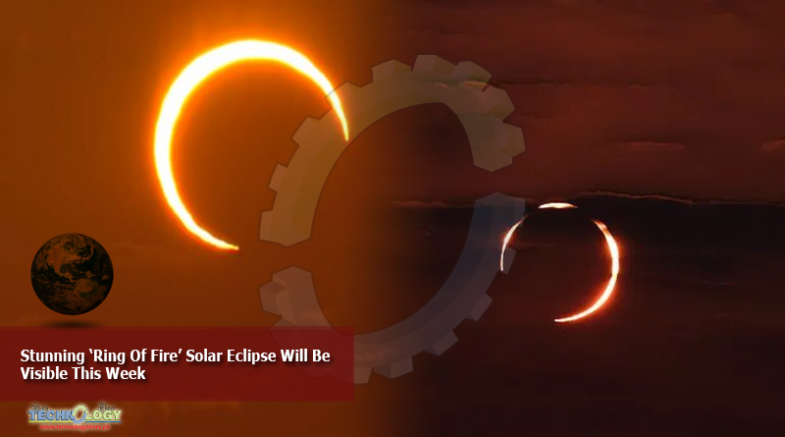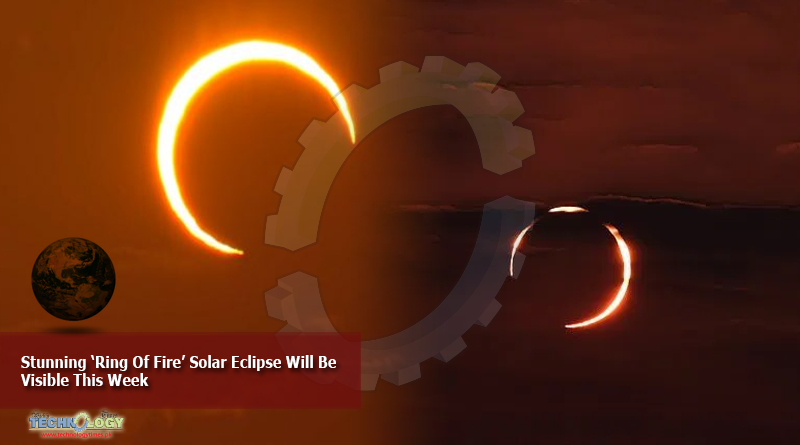A few lucky countries will see the Moon highlighted by a stunning ‘Ring Of Fire’ circle of light later this week, as a total annular solar eclipse is set to take place.

The event occurs when the Sun, Moon and Earth align, but when the Moon is too far away in its orbit of the Earth to completely block out the Sun.
As a result, the outskirts of the Sun can be seen blazing around the Moon, creating an effect astronomers refer to as a ‘ring of fire’. The name ‘annular’ is derived from the Latin word for ring.
NASA shared a video from a previous total annular solar eclipse to showcase the event – check it out below:
The footage was taken in the early morning of May 10, 2013 in Western Australia, when the Moon came between the Earth and the rising Sun.
NASA explained:
At times, it would be hard for the uninformed to understand what was happening. In an annular eclipse, the Moon is too far from the Earth to block the entire Sun, and at most leaves a ring of fire where sunlight pours out around every edge of the Moon.
The upcoming eclipse will take place on Sunday, June 21, but unfortunately astronomy fans in the UK and the US won’t be able to see it.
NASA has made a map of the eclipse’s trajectory to indicate where the annular phase of the eclipse should be visible, weather permitting, with residents in central Africa, the Arabian Peninsula, and a narrow band across Asia having some of the best views.
Other areas, such as eastern Africa and the Middle East, will still be able to witness a partial eclipse, as NASA explains:
You can be hundreds of miles from the theoretical point of Greatest Duration and still enjoy annularity lasting within a fraction of a second of the maximum possible (as long as you stay within several miles of the central line).
The space agency advises anyone hoping to see the eclipse to watch the weather forecasts in the days leading to it, and to choose a location that is likely to be free of clouds at the time the event is set to take place.
NASA adds:
Good weather is the key to successful eclipse viewing – better to see a shorter eclipse from clear sky [than] a longer eclipse under clouds.
Those who are unable to witness the eclipse in person will be able to live-stream it on Timeanddate.com, so you don’t have to worry about missing out.
Originally Publish at: https://www.unilad.co.uk/
